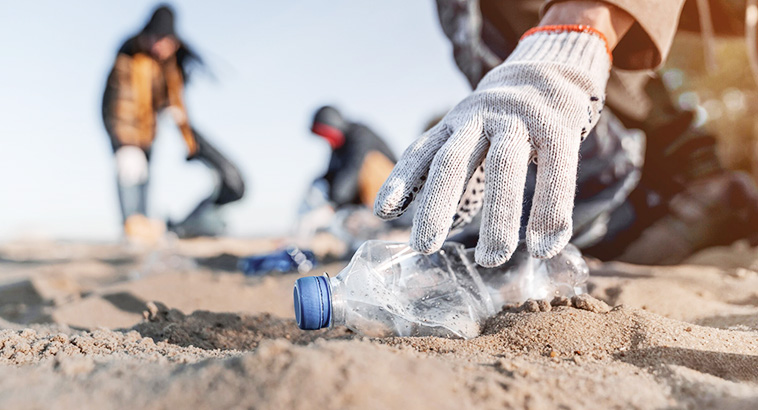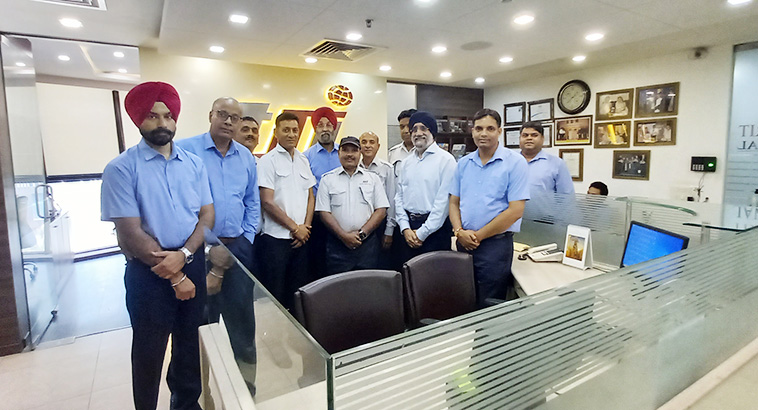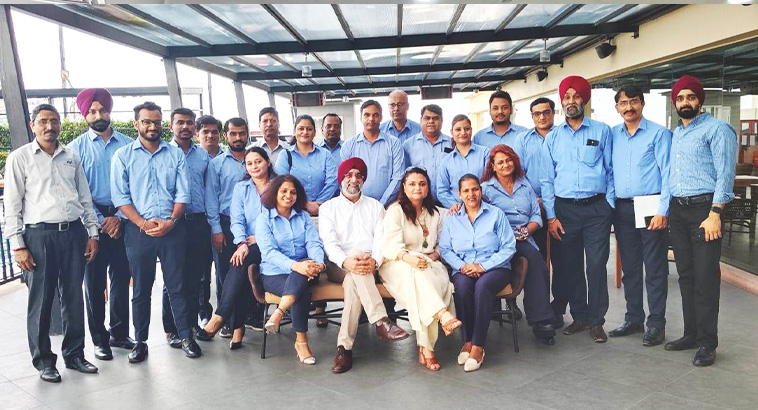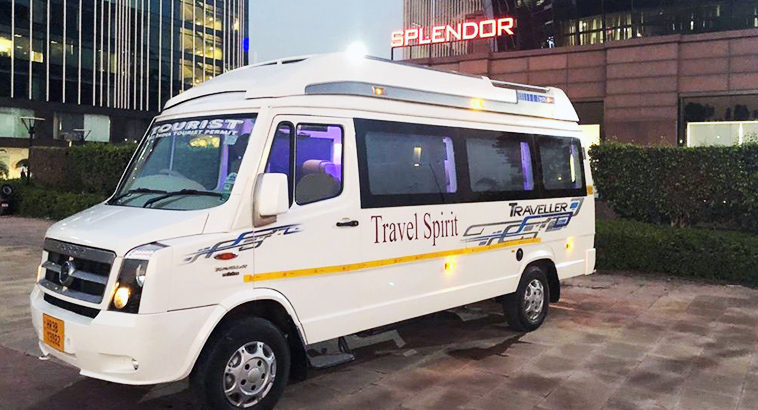All the services provided by TSI were customer focus all around and the service to the highest standards. Udaipur cooking demonstration and Taj Mahal visit was the best thing we experienced during the tour. Overall the itinerary planned was satisfactory and value for money. Our assessment of the driver service goes over the excellent mark and a true pleasure to be driven around by him. Always safe, always smooth, always efficient, always spot-on!
Date of Travel: 17th February to 12th March 2025
Places visited: Delhi / Mandawa / Pushkar / Jodhpur / Bera / Udaipur / Bundi / Jaipur / Agra / Alwar
Mr. Ruud Dekkers & Mrs. Walthera Matheeuwsen
Netherlands
The trip organized by TSI was excellent. Our driver was very good, always on time, always punctual and took a very good care of us. All the hotels and tours provided were excellent. Very nice country, all went well. Thank you TSI for all the arrangements. We have a beautiful trip!
Date of Travel: 03rd to 16th March 2025
Places visited: Delhi / Jodhpur / Jaipur / Agra / Orchha / Khajuraho / Varanasi / Delhi
Mr. Luc Jerome Pottier & Mrs. Brenda Helena A Verstichel
Belgium
The trip was great, accurate, polite and very well organized. So, I have had a great holiday and the driver was good company and kept polite distance as well.
Date of Travel: 19th February to 07th March 2025
Places visited: Mumbai / Ahmedabad / Udaipur / Pushkar / Jaipur / Agra / Delhi / Rishikesh / Delhi
Mr. Anton Pieter Tierie
Netherlands
The tour was a wonderful experience greatly enjoyed by our group. Although some bus trips were long due to traffic and roadworks, everyone understood that this was beyond the control of the tour operators. The only slightly disappointing hotel was Deogarh Mahal as the owners have not invested in maintenance since our last visits. Manoj handled all arrangements perfectly and all the people in our groups thought he was wonderful.
Date of Travel: 10th to 20th January 2025
Places visited: Delhi / Agra / Jaipur / Pushkar / Deogarh / Udaipur / Delhi / Hampi / Cochin / Periyar / Cochin
Mr. Ian Hemphill
Australia
Well organised and very professional. Everything was in place and worked very well. Guides and drivers were very friendly and professional. The itinerary was very full but there were no problems. It was disappointing not to be able to take a boat ride on the Ganges due to flooding and there were no Tigers in Ranthambore. Overall we are completely satisfied. Thank you.
Date of Travel: 16th September to 02nd October 2024
Places visited: Delhi / Varanasi / Agra / Ranthambore / Jaipur / Jodhpur / Udaipur / Mumbai
Mr. David Cardwell
United Kingdom
Our trip was an incredible journey filled with beautiful memories. The combination of excellent hotels, very good guides and skilled drivers and last but not least, the delicious food made it an experience we will remember forever. Thanks !!
Date of Travel: 21st September to 08th October 2024
Places visited: Delhi / Agra / Jaipur / Mumbai / Madurai / Periyar / Alleppey/ Munnar / Guruvayoor / Cochin
Mr. Pilar Villanveva
Mexico
We saw some fantastic sites and a lot interesting people. We have a very good experience in our trip. Very much satisfied.
Date of Travel: 26th October to 14th November 2024
Places visited: Delhi / Jodhpur / Udaipur / Deogarh / Jaipur / Agra / Amritsar / Delhi
Mrs. Louise Verboon
Netherlands
We had a brilliant time ! From the very start to the very end. Very efficient & we will recommend, so thank you all.
Date of Travel: 31st October to 15th November 2024
Places visited: Darjeeling / Pelling / Gangtok / Kalimpong / Phuentsholing / Thimphu / Punakha / Gangtey/ Paro / Delhi
Mr. Andew Jones
United Kingdom
The services are very good". Mr. Pawan is an excellent driver who does everything to make your holiday even better. We would like to thank him. We had a very good trip, everything was well organised. No complaints whatsoever however the last 2 days (Bhattapur en Negarot can be done one day if you are not planning to hike we felt that Negarot cost us a lot of money and didn't make our holiday better only longer. Tip - You can book a flight to see the Himalaya for sure. After that there is no urgency to go to Negarot.
Date of Travel: 01st to 21st October 2023
Places visited: Delhi / Pushkar / Kalakho / Gwalior / Khajuraho / Varanasi / Lumbini / Chitwan / Kathmandu / Bakthapur / Nagarkot / Delhi
Mrs. Maria Van Lemmen
Netherlands
"The trip was amazing! We loved all the great things we visited, The hotels were excellent and the guidance of our drive on our trip made it so much better!!! We would definitely book with you again!!
Date of Travel: 12th to 26th November 2023
Places visited: Delhi / Mandawa / Bikaner / Jaisalmer / Jodhpur / Udaipur / Deogarh / Jaipur / Agra / Delhi
Mr. Paul Van Haaren
Netherlands
Everything well organised, times, bookings, guides, all good - only inert Akbar's tomb in the tour - it's beautiful.
Date of Travel: 10th to 17th November 2023
Places visited: Delhi / Jaipur / Agra / Delhi
Mrs. Cunei Teresa
Italy
What a pleasure to have absolutely no responsibility except to get the bags out on time and have my passport ready!
Date of Travel: January 2017
Places visited: Delhi / Varanasi / Lucknow / Agra / Jaipur / Pushkar / Udaipur / Coimbatore / Cochin / Periyar / Kumarakom
Mimi G - Member of SpiceTour
Melbourne, Australia
Professional, well controlled, kind, always thinking in our pleasure. This trip must be swallowed day by day. The contracts between each estate is very hard. We enjoyed knowing ancient traditions in Tamil Nadu, modern, prosper and economical growth in Kerala, peace and nice landscape in Karnataka. We enjoyed Indian people. They are kind and peaceful. Good experiences in Madurai & Mysore. Nice trip !! Thanks a lot !!
Date of Travel: 04th to 19th November 2023
Places visited: Chennai / Mahabalipuram / Pondicherry / Tanjore / Madurai / Periyar / Kumarakom / Cochin / Mettupalayam / Ooty / Mysore / Bangalore.
Mrs. Marta Puig
Spain
Professional / flexible and fine.
Date of Travel: 26th October to 04th November 2023
Places visited: Delhi / Jaipur / Agra / Havelock / Portblair / Delhi
A Group of 28 pax
Denmark
Very good, no complaints at all". It was a very great trip ! Partly by the excellent guide and drivers. Great nature, great culture. We surely would recommend this trip to our friends.
Date of Travel: 16th to 30th October 2023
Places visited: Delhi / Bagdogra / Darjeeling / Pelling / Namchi / Gangtok / Kalimpong
Mr. Rob Van Der Tol
Netherlands
Very happy with the services.
Date of Travel: 05th to 22nd October 2023
Places visited: Delhi / Leh / Srinagar / Gulmarg / Amritsar / Dharamshala / Delhi
Mr. David Moore
Australia
All hotel except Camp Thar very good, driver & guide very professionals and very kind. We feel very enjoyable !
Date of Travel: 01st to 21st October 2023
Places visited: Delhi / Agra / Jaipur / Khimsar / Osian / Jodhpur / Deogarh / Kumbhalgarh / Udaipur / Delhi / Varanasi / Kathmandu / Delhi
Mr. Marin Mumany Jaume
Spain
We are very happy with the services". We really had a very good experience. Kishan the driver was noce, is a lovely person and drives safe. The tour was very interesting and Rajasthan will stay in our heart. Thank you.
Date of Travel: 25th August to 05th September 2023
Places visited: Pushkar / Bikaner / Jaisalmer / Jodhpur / Devigarh / Udaipur
Mrs. Eva Fellet
Netherlands







